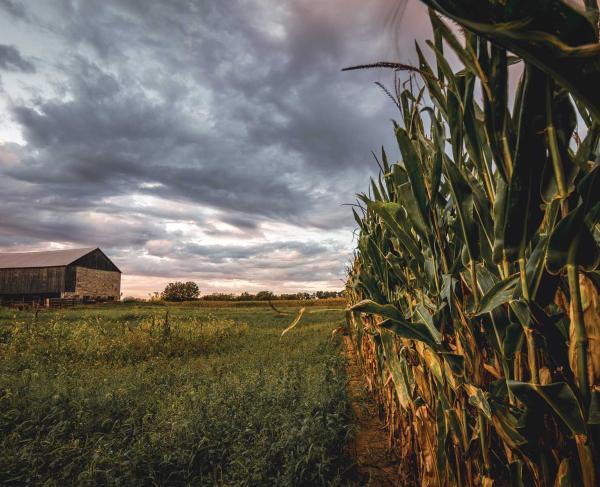Book: Searching for George Gordon Meade
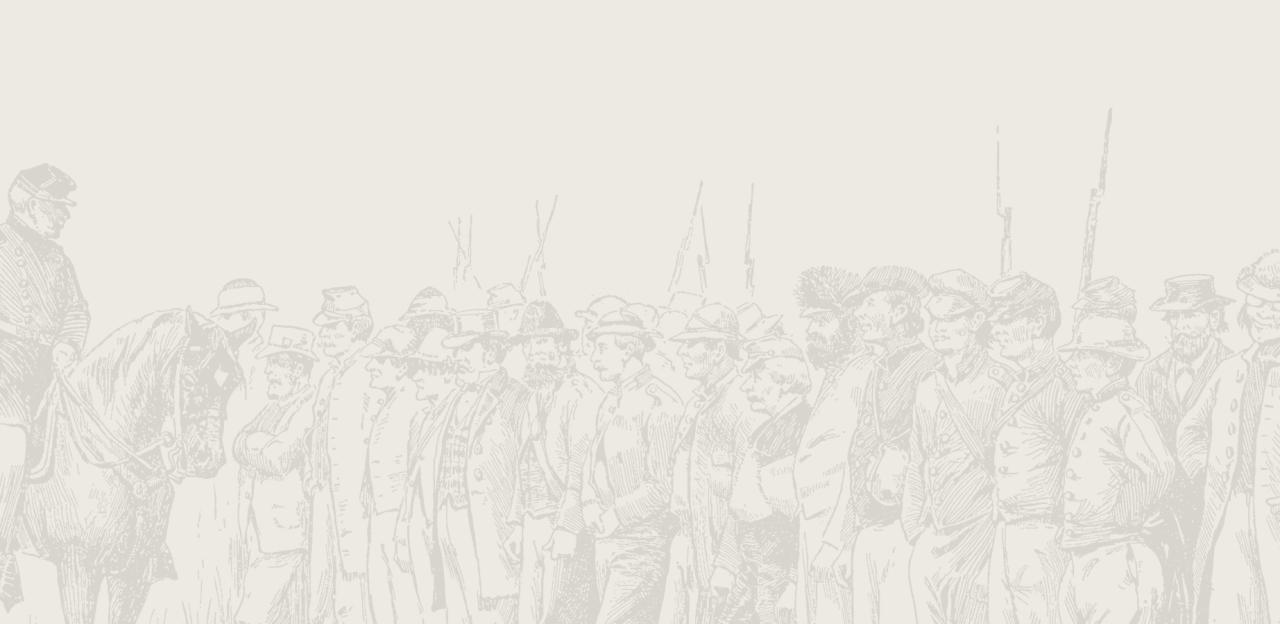
Searching for George Gordon Meade: The Forgotten Victor of Gettysburg is Tom Huntington's account of his travels to sites associated with Union Gen. George Meade. From Texas to Pennsylvania, each stop on Huntington's travels illuminates more about Meade, painting a portrait of the general for readers.
Civil War Trust staff sat down with the author to discuss the new book.
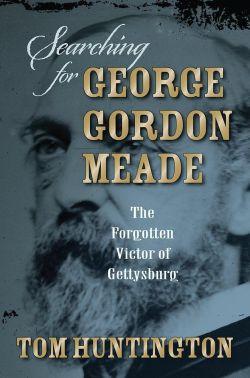
Civil War Trust: By visiting the sites associated with General Meade, you took an unusual angle in telling his story. What inspired you to pursue his life in this way?
Tom Huntington: I used to edit a magazine called Historic Traveler, and I loved that approach to history—going to a place, finding out what happened there, and seeing what remains today. I was also inspired by Tony Horwitz’s Confederates in the Attic, which I thought did a great job of mixing past and present. So when I decided to write about Meade I intended from the start to make it a literal “journey of discovery” by traveling to the places Meade knew and the battlefields where he fought. I also sought out people who could tell me about their take on Meade and the Civil War, and I found ways to immerse myself in what I guess you could call the process of remembering, whether I was participating in a birthday toast at Meade’s gravesite in Philadelphia or observing a “skirmish” of the North-South Skirmish Association. It was a lot of fun investigating Meade’s life and legacy that way. (Obviously I did a lot of historical research, too).
General Meade was given command of the Army of the Potomac just three days before Gettysburg. How did he approach what must have been a daunting responsibility on the eve of battle?
TH: “Daunting” is just the word for it. It says something about the state of the army that Meade’s first thought when the messenger from Washington woke him up with his orders to take command was that he was going to be arrested. Then, Meade had to find out where his army was! He had been on the outs with his predecessor, Joseph Hooker, and hadn’t even seen Hooker in almost two weeks. So right away, Meade had to meet with the outgoing commander and learned the positions of all the elements of the army.
According to one account, when Meade found out how scattered the army was he “unguardedly expressed himself.” Hooker “retorted with feeling.” It must have been an awkward meeting. Meade then set out to come up with a plan to deal with Lee, who had already moved into Pennsylvania. Meade’s engineers found what they thought would have been a great defensive position—one that also fulfilled Meade’s orders to protect Washington and Baltimore—along Big Pipe Creek in Maryland. The so-called Pipe Creek Circular, the order in which Meade informed his commanders of this plan, later created controversy when Meade’s critics cited it as evidence that he intended to retreat from Gettysburg. But it was a contingency plan only. Once events overtook it Meade hurried his army north towards Gettysburg, where John Buford’s cavalry, and later John Reynolds, commanding the army’s left wing, had begun fighting elements of Lee’s Army. Talk about on the job training!
The battle of Gettysburg decimated the leadership corps of the Army of the Potomac. How did that impact Meade’s attempt to re-engage Lee’s Army during his retreat?
TH: A lot of people think Meade never pursued Lee at all after Gettysburg, which is not true. There’s a reason Eric Wittenberg, David Petruzzi and Michael Nugent called their book about the pursuit One Continuous Fight. But the Army of the Potomac had lost a lot of valuable officers -- most notably John Reynolds, killed on July 1, and Winfield Scott Hancock, badly wounded on July 3. It was bad enough that Meade was still new to his command—the two men he most relied on were gone. Keep in mind that this was an army that had suffered badly at Lee’s hands before Gettysburg. Still, I suspect that if there’s one decision Meade wished he could take back, it would be his choice to postpone his attack on Lee’s lines outside Williamsport, Md., from July 13 until July 14.
It seems Meade was personally in favor of attacking but when all but two of his corps commanders recommended taking another day to reconnoiter the Confederate defenses, he decided to wait. Lee’s army slipped across the Potomac the next night. When the Army of the Potomac did advance on July 14, it found empty fortifications. What if Meade had attacked on July 13? It’s one of the great “what ifs” of the war. Of course, we will never know.
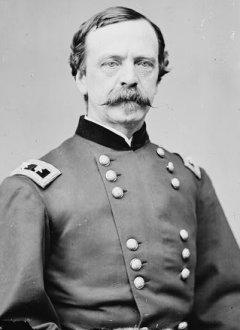
In the aftermath of the battle, General Sickles waged a campaign against Meade that resulted in extensive Congressional hearings. What was Sickles motivation in doing so?
TH: Dan Sickles sure did a lot of damage to Meade’s reputation. It all stemmed from Sickles’s actions at Gettysburg on July 2, when he moved his III Corps forward without orders, putting it in an exposed and stretched-out position. When the Confederates attacked that afternoon, they nearly decimated the III Corps (Sickles himself lost his leg), and Meade had to throw in units from other corps to support it. Afterwards, Sickles defended his blunder by claiming that Meade had intended to retreat from Gettysburg and that by moving forward and precipitating the fighting Sickles had prevented that from happening. So, Dan Sickles was the true savior of the Union army at Gettysburg!
As Edwin Coddington put it in his study of Gettysburg, “General Sickles apparently preferred to be guilty of willful insubordination that of stupidity.” Sickles, by then a one-legged general, was one of the star witnesses when Congress’s Joint Committee on the Conduct of the War looked into Meade’s actions at Gettysburg and after. Sickles—who was a rogue, but a fascinating one—outlived Meade by a good many years, and he never ceased to repeat his version of events. But, to give him some credit, it was Congressman Dan Sickles who introduced the bill that made Gettysburg a national military park.
With General Grant accompanying the Army of the Potomac, how did Meade adjust to his new role as an army commander with his immediate superior looking over his shoulder?
TH: In some ways it was a difficult transition. Grant was general-in-chief of the Union armies but rather than stay in Washington, he chose to travel in the field with Meade’s army. As Meade wrote to his wife, she could expect to see “the Army of the Potomac putting laurels on the brows of another.” It was a tough role for a proud man like Meade. He did offer to resign so Grant could put his own choice in command but Grant declined. “This incident gave me even a more favorable opinion of Meade than did his great victory at Gettysburg the July before,” Grant wrote in his memoirs.
Meade did everything he could to cooperate with Grant, although he grumbled in his letters home about being overlooked. Grant’s staff complained about having to transmit Grant’s orders to the Army of the Potomac through Meade, but Grant appeared satisfied. “General Meade has more than met my most sanguine expectations,” he wrote to Secretary of War Edwin Stanton after Spotsylvania. “He and Sherman are the fittest officers for large commands I have ever come in contact with.”
The one thing that really angered Meade was when Grant favored General Philip Sheridan over Meade for promotion. Meade was proud and ambitious and Sheridan’s lust for glory obviously rubbed him the wrong way. I think Meade was pretty realistic when he described the difference between him and Grant this way: “I over-sensitive, and he deficient in sensibility.”
You visited several sites connected with Meade’s career. What do they tell modern visitors about his life and accomplishments? Can you talk about the Civil War Trust’s role in preserving some of those sites?
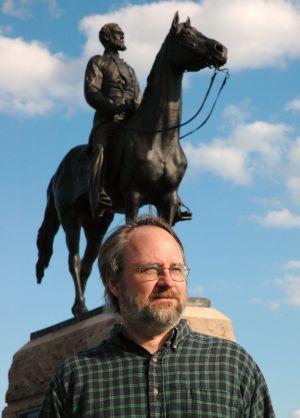
TH: Some of them don’t tell you anything about Meade, and at least one of them tells you something completely incorrect. I visited a little museum in Port Isabel, Texas, which had information about future Civil War generals who passed through during the Mexican-American War. A little panel there said Meade had fought in Vicksburg—Vicksburg, Virginia, not Vicksburg, Mississippi—and that General “T. Sherman” put him in command of the town once it fell! I had to laugh.
At the Battle of the Wilderness, signs refer to Meade as “the forgotten commander,” which is true enough, I guess, but there’s also has a marker that describes “the conservative, sometimes timid, methods of the Army of the Potomac.” I would argue that Meade was over-aggressive in the Wilderness, especially on May 5, when he kept pressuring Gouverneur Warren to push his V Corps forward despite Warren’s protests that the VI Corps hadn’t arrived to protect his flank.
In the book, I use the Wilderness as an example of another kind of fight, which is the fight to preserve our Civil War battlefields. I was working on the book shortly after the successful campaign to prevent Walmart from building a store on a historically significant piece of the battlefield, so I wrote about that. Throughout my travels, I visited (and wrote about) many other sites the Trust has preserved—Glendale, where Meade was badly wounded during the Peninsula campaign; the Slaughter Pen outside Fredericksburg; Payne’s Road, the scene of fighting during Meade’s Mine Run campaign; White Oak Road outside Petersburg. Not only does the Trust preserve these sites, but it also puts up very helpful and informative historical markers. Walking a Civil War battlefield is a key way to understanding what happened there and once the land has been developed you lose that all-important connection with the past.
What is your favorite story about Meade you discovered during your travels?
TH: My favorite story is one that happened at Gettysburg late in the day on July 2, as the Confederate assault on the Union lines was cresting. Meade and his staff had ridden up to Cemetery Ridge, only to see there were no defenders between them and rebels advancing across the fields. Meade actually drew his sword as though he intended to personally lead a charge. “It is in the minds of those who follow him that he is going to throw himself into the breach,” his son, George (who served on his father’s staff) wrote. His aides nervously followed suit. Just then someone shouted, “Here they come, General!” and soldiers from the I Corps hurried up and advanced to meet the Confederates. “Come on, gentlemen!” Meade shouted, waving them forward with his hat. General John Newton arrived and offered Meade a sip from his flask. As the two generals conversed on horseback, a shell exploded in the ground nearby, showering them with dirt. It’s a great story, and I especially enjoyed hearing it told during a “real-time” ranger presentation at Gettysburg late in the afternoon on the actual anniversary.
Which site in your travels would you consider a "must visit" destination for other Meade enthusiasts? Why?
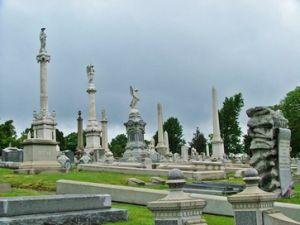
TH: Well, Gettysburg, of course. That’s a given. You have Meade’s statue on Cemetery Ridge and his headquarters and the little white Leister House. One of my favorite visits, though, was to the Grand Army of the Republic Museum and Library in Philadelphia. My wife and I went there for the “grand unveiling” of the head of Old Baldy, Meade’s horse. Baldy had been on display for years at a museum downtown; but when that museum closed, the GAR Museum sued to get the head back. It’s now housed in a case in a little room surrounded by Meade artifacts, including his Bible, some cufflinks with locks of his hair and a chair from the Leister House. The grand unveiling was a blast, and the next day a picture of my wife, gazing at Old Baldy, appeared in the Philadelphia Inquirer. We got a kick out of that.
If you’re in Philadelphia you should also visit Meade’s grave at Laurel Hill Cemetery. In fact, you should do it on his birthday, December 31 (which is also his wedding anniversary). The General Meade Society of Philadelphia has an event at Laurel Hill every December 31, and a lot of people show up. There’s a procession down to the gravesite for a ceremony and a champagne toast and then there’s a free buffet luncheon at the cemetery gatehouse. It’s a really cool event (and, since it is December 31, it can be really cool in more ways than one). I love events like this because you meet all sorts of people who come because they love history and they want to make a connection with the past. I guess that’s something the Civil War Trust can appreciate.
Buy the Book: Searching for George Gordon Meade: The Forgotten Victor of Gettysburg
As the editor of the late, lamented Historic Traveler magazine, Tom Huntington developed a love for writing that merged stories from the past with journeys of discovery in the present. That was an approach he took with his first two books, Ben Franklin's Philadelphia and Pennsylvania Civil War Trails. In his latest offering, Huntington visits battlefields and museums and talks with historians, curators, park rangers and Civil War enthusiasts as he examines the life and reputation of the general who won the pivotal battle of the war. Huntington's many magazine articles have appeared in American Heritage, Smithsonian, Air & Space, British Heritage, America in WWII, Civil War Times, America's Civil War, Invention & Technology and many other publications. He lives in Camp Hill, Pennsylvania, with his wife, Beth Ann, and his children, Katie and Sam.
Related Battles
12,401
10,316
17,304
13,460
12,737
4,595
12,500
6,000
6,800
8,700
23,049
28,063
8,150
3,236
14,462
7,387
18,399
12,687
17,000
13,000

